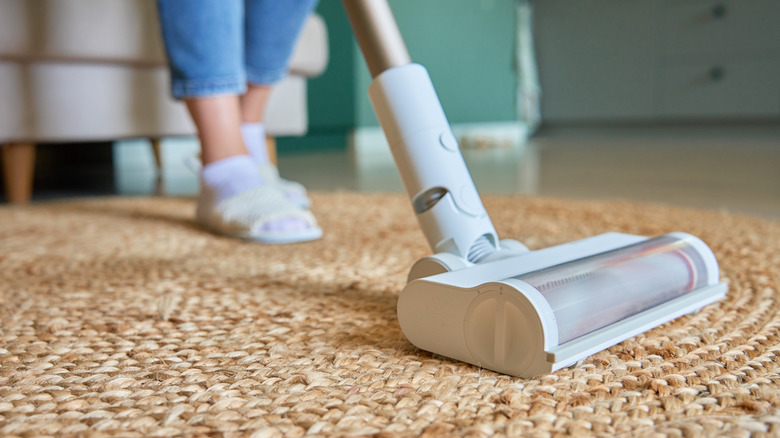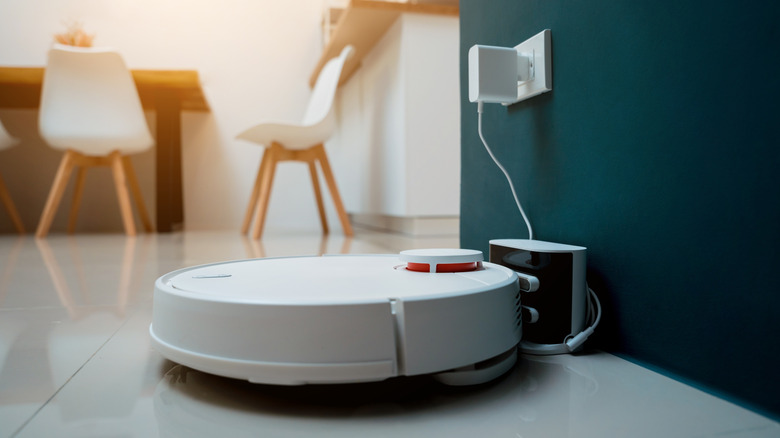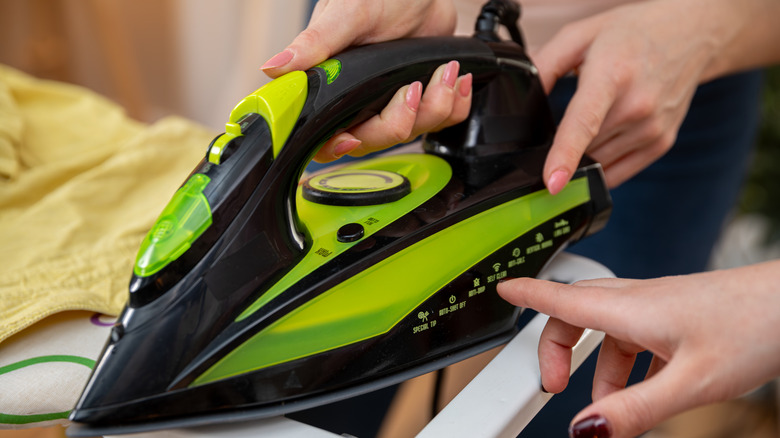The Hidden Disadvantages To Cordless Appliances You Should Be Aware Of
With life being so busy, finding shortcuts and making your chores easier is a must. Now, you can cut the cord on many home appliances, from hand mixers and blenders to vacuums and irons. As tempting as the cord-free life is, those appliances come with some drawbacks, particularly issues with a power source that might not be able to handle tough jobs. You also have to account for charging time, which could slow down your tasks.
That's not to say you should forget cordless appliances. For your lifestyle, you might prefer battery-powered appliances for the convenience. You can take them along with you anywhere, whether or not outlets will be readily available. For instance, you can pack a cordless blender with your camping supplies to enjoy a smoothie even in the middle of nowhere — at least until the battery dies. You might decide cordless vacuums are worth the hype for their lightweight, cord-free portability.
Eliminating cords often makes appliances easier to use, even at home. With a cordless vacuum, you can clean your floors without constantly adjusting the cord to avoid obstacles, and you don't have to worry about finding a new outlet when you reach the end of the cord. Cordless kitchen appliances are easy to tuck away without wrestling with a long cord. Plus, you don't have to worry about clutter on your countertops or frustrating cords while you cook. The key to deciding if you should switch to cordless appliances is determining if those advantages outweigh the potential problems.
The power source may not be powerful enough
If you've used a cordless tool, you've probably encountered issues with dying batteries. Maybe you're using a cordless drill and you notice it slowing down. The same thing can happen with cordless appliances. Batteries only last so long before they lose power, which affects the performance of the gadget. If you have a long job to complete, you might not have enough time before the battery dies. Then, you have to stop and wait for the recharge period. Depending on the device, this could be hours.
Eventually, the rechargeable battery might decline in its performance and fail to charge fully. To keep using your appliance, you'll need to replace the battery, adding a costly second purchase. Generic batteries may save you money, but it's best to buy a replacement battery from the original manufacturer to ensure the circuitry is compatible and you get all of the safety features that the manufacturer incorporates. Plus, disposal is a hassle since you can't toss lithium-ion batteries into the trash. You'll need to look for a company that offers battery recycling or a hazardous household waste disposal site.
Another potential issue is that battery-powered appliances often aren't as powerful as similar corded models. If you have a tough job, you might find that cordless options can't handle it. For example, a cordless vacuum might not offer enough suction to pick up dirt, pet hair, and other debris. Battery-operated blenders could struggle to pulverize frozen fruit or ice cubes, and cordless hand mixers are often only suitable for mixing small, soft foods. Even cordless irons may run at cooler temperatures.
Cordless appliances may not be as convenient as you thought
Cutting the cord eliminates some issues, but it creates other inconvenient situations. Even though you don't have a cord attached while you use the appliance, you do need to plug it in for recharging. That means the storage spot you choose ideally needs to be near an outlet, and you likely can't store the items in a closet or pantry since those storage areas often don't have outlets in them.
Even though cordless appliances are often smaller than their corded counterparts, they could be deceptively heavy in some situations. The battery adds weight to the appliance, which can cause issues for appliances you hold, such as an iron. Handling the extra battery weight could make ironing sessions difficult or tiring.
You may notice that battery-powered appliances are smaller than similar corded options. While the size can improve portability, it also limits how you can use the appliance. Blender containers may hold less food, for example, which means you can't make a larger batch of your recipes. Buying a cordless vacuum may leave you with a smaller dirt canister, so you'll have to empty it more often. These issues have workarounds, but they make the gadgets a little less convenient.


